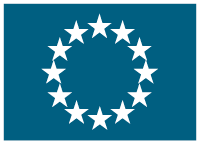Demonstration of integrated total water management for a cluster of 8 industries, implementing a centralised water supply and a semi collective WWTS and resulting in substantial ground water and energy savings
(Maastricht water)
Start date: Jan 1, 2001,
End date: Dec 31, 2003
PROJECT
FINISHED
Background
A few years ago, goals were set by the Dutch government to save the best water resources such as groundwater for potable water production only. For industrial use, the objective was to apply surface water as much as possible. The Province of Limburg, as well as the Municipality of Maastricht, actively supported the shift from ground water to surface water usage. This attitude was motivated by the serious situation in the area with regard to the decrease in the ground water level. In the South of the Province of Limburg this decrease has already resulted in serious and further increasing damage to natural areas and farmland and it has put pressure upon the local potable water supply.
In addition to these problems, there was an emission of the chemical nitrate (a fertilising nutrient) and small residues of heavy metals into the river Meuse by one of the participating companies. Furthermore, two paper processing companies in the area have major problems with the management of their combined wastewater and wastewater treatment systems.
Objectives
The aim of the project was to reduce the emissions produced by industry, to decrease the total amount of supplied and/or disposed water and to process the water in an environmentally responsible manner i.e. less chemical consumption, less sludge production, less energy consumption.
This project was an introduction to âtotal water managementâ by a partnership of existing industrial clusters in order to minimize the usage of valuable ground water. The reduction in ground water extraction would bring the project fully in line with the anti-dehydration policy of the national Dutch Government.
This objective was to be achieved by the delivery of surface water, prevention of the emission of nitrates and heavy metals on surface water, implementation of internal good housekeeping measures, reduction of water use and by trying to find a symbiosis between different waste water streams.
The implementation of an integrated water management system would make it possible to provide industry in a sustainable and economic viable way with the process water it needs (quantitatively and qualitatively), significantly reducing the actual extraction of ground water.
Industrial process water was to be produced centrally in a surface water treatment system that, and due to the introduction of the cluster concept, it could be improved in a more optimal way (advantage of scale/process stability).
The implementation of an integrated (waste) water management system would make it possible to control and reduce the emissions of the nutrient chemical nitrate and small residues of heavy metals in the river Maas (Meuse). The nitrate is used as an 'oxygen source' for bacterial degradation processes, reducing (minimizing) the need for molecular oxygen and therefore aeration energy.
Results
The reduction of nitrate emission in surface water by the company CIBA was realized (2650T NO3/y) and the company Sappi Maastricht reduced its O2 consumption by ±1000T O2/y. Furthermore, a waste water treatment plant is no longer needed at the facilities of Ciba.The company Meerssen Papier did not participate in the project, therefore the water consumption reduction objective was only partially achieved mainly by internal optimization measures.
The final objective, i.e. to eliminate the ground water use, could not be reached. All the companies could not be connected to the cluster facilities.
The following environmental successes can be listed:
- reduction of ground water use by circa 1.000.000 m³/y. This has been realized through internal optimization measures and the substitution of groundwater by Maas water.
- reduction of process water use - ± 500.000 m³/y - by optimization measures
- nitrate emission to surface water has been reduced by 600 T N/y (Ciba)
- nitrate is used for biological water treatment instead of O2 (Sappi)
- CO2 emission is reduced
- reduction of energy consumption (Sappi) - ±500.000 kWh
- reduction of chemicals use by exploiting C-sources from waste water (Sappi).
Concerning the connection to the cluster facilities it appeared that the internal optimizations were substantial and also led to the conclusion that several industries have no longer a cost saving incentive to connect to the central facilities. Costs are too high in comparison with the potential water savings.
Concerning the partnership between Ciba and Sappi, it is a win/win situation. Ciba does not discharge its nitrate anymore and receives treated water from Sappi; Sappi uses nitrate from Ciba as O2 source for its WWTP.
Get Access to the 1st Network for European Cooperation
Log In
or
Create an account
to see this content
Coordinator
- Joep J.C. GEURTS
- (Netherlands)
